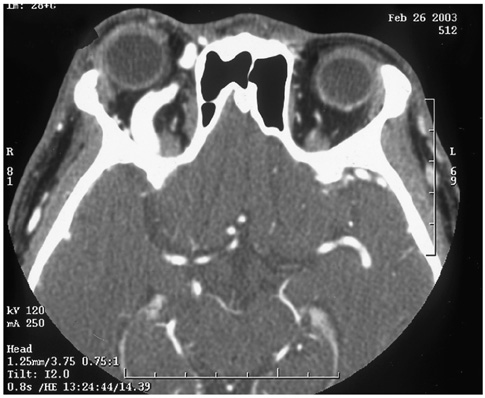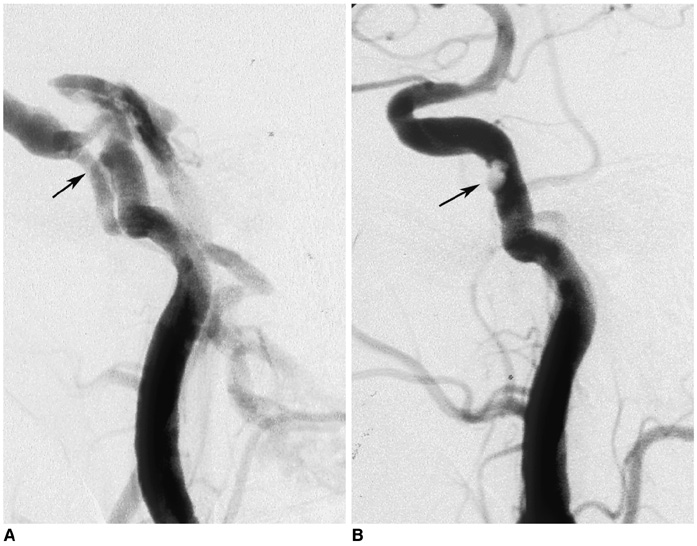Korean J Radiol.
2006 Sep;7(3):215-217. 10.3348/kjr.2006.7.3.215.
Occlusion of Traumatic Carotid Cavernous Fistula by Incidentally Formed Thrombus During the Interventional Procedure: A Case Report
- Affiliations
-
- 1Department of Neurosurgery, Yonsei University Wonju College of Medicine, Kangwon-do, Korea. cursor2@wonju.yonsei.ac.kr
- 2Department of Radiology, Yonsei University Wonju College of Medicine, Kangwon-do, Korea.
- 3Department of Neurology, Yonsei University Wonju College of Medicine, Kangwon-do, Korea.
- KMID: 1114356
- DOI: http://doi.org/10.3348/kjr.2006.7.3.215
Abstract
- In this report, we present a rare case of traumatic carotid cavernous fistula that was occluded during the interventional procedure by incidentally formed blood clot. Sudden occlusion of the fistula and the resolution process of the precarious blood clot can be clearly seen on the serial angiogram.
MeSH Terms
Figure
Reference
-
1. Debrun GM, Vinuela F, Fox AJ, Davis KR, Ahn HS. Indications for treatment and classification of 132 carotid-cavernous fistulas. Neurosurgery. 1988. 22:285–289.2. Fabian TS, Woody JD, Ciraulo DL, Lett ED, Phlegar RF, Barker DE, et al. Posttraumatic carotid cavernous fistula: frequency analysis of signs, symptoms, and disability outcomes after angiographic embolization. J Trauma. 1999. 47:275–281.3. Guglielmi G, Vinuela F, Duckwiler G, Dion J, Stocker A. High-flow, small-hole arteriovenous fistulas: treatment with electrodetachable coils. AJNR Am J Neuroradiol. 1995. 16:325–328.4. Alkhani A, Willinsky R, TerBrugge K. Spontaneous resolution of bilateral traumatic carotid cavernous fistulas and development of trans-sellar intercarotid vascular communication: case report. Surg Neurol. 1999. 52:627–629.5. Nishijima M, Iwai R, Horie Y, Oka N, Takaku A. Spontaneous occlusion of traumatic carotid cavernous fistula after orbital venography. Surg Neurol. 1985. 23:489–492.
- Full Text Links
- Actions
-
Cited
- CITED
-
- Close
- Share
- Similar articles
-
- Regional Cerebral Blood Flow Changes in Traumatic Carotid Cavernous Fistula During Trapping Procedure: Case Study, Preliminary Report
- Clinical and Radiological Analysis of Carotid Cavernous Fistula and Detachable Balloon Occlusion: Case Report
- A Case of Spontaneous of Traumatic Carotid Cavernous Fistula After Carotid Angiography
- Traumatic Carotid-cavernous Fistula Bringing about Intracerebral Hemorrhage
- Bilateral Traumatic Carotid-Cavernous Fistula




